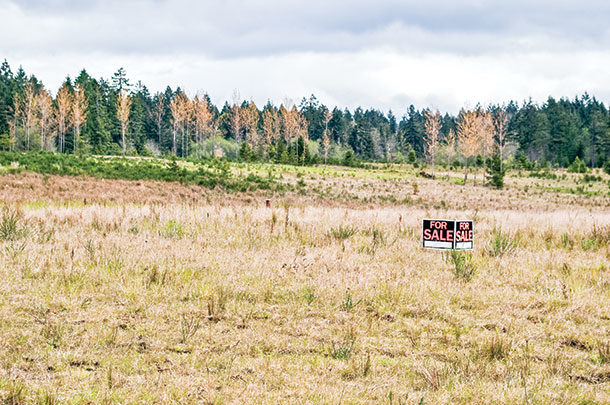This spring, a real estate listing caught my eye. An old friend from high school shared a listing in our hometown on Facebook. It was a historical home on acreage. I clicked on the listing and browsed through the photos.
The owners had tastefully updated it but kept the home’s historic nature intact. What was most remarkable about this house was not the owners’ skill at restoration, but the price tag. I was floored at the price they were asking. Not a day later, though, that house was marked pending on the listing site.
The crazy thing is: This home was not unique in either its price or its quick offer in my little town. Of the eight or so homes with MLS listings in that time, six were under contract. This rural farming community, on the outskirts of a mid-sized and well-regarded city, is undergoing what the real estate world is calling a “Zoom boom.”
If you aren’t familiar with the term, I’ll give you a little background, but my guess is you know the exact nature of this Zoom boom phenomenon. Last spring, as the COVID-19 pandemic was just getting its foothold and businesses shut their doors temporarily, previous office and cubicle dwellers became teleworkers overnight.
More than a year later, many haven’t returned to the office, preferring a permanent work-from-home arrangement. They now have the flexibility to live and work wherever they want. High-speed internet access is quite literally the only limiting factor. People are leaving cities in droves and are showing up in your little cities and towns.
Influences on property values
What does this Zoom boom mean for agricultural property? Well, according to some agricultural real estate experts across the country, the Zoom boom or this influx of new people to less urban areas is impacting property values as people look to agricultural and particularly ranching properties as both investment and lifestyle properties. However, that’s not the only thing affecting the property value outlook. Low interest rates and good cattle prices create an environment where property values are strong, and demand is high.
Denver Gilbert, a licensed real estate broker and owner of Clark and Associates, works with properties in Montana, Wyoming, North Dakota, South Dakota, Nebraska and Colorado. He says the so-called Zoom boom impacts the ranch property market, especially in states like Montana, where cities such as Bozeman and Billings have seen unprecedented growth.
Gilbert says, “In the region we work, we have people coming in from all over the country, not just for homes but for ranching and farming properties with investment potential, which pushes prices up. [The year] 2020 started strong for rural real estate, had a lull there in the middle as the shutdowns happened, but we finished the year as one of the best years we’ve ever had.”
Colter DeVries, a real estate agent and host of The Ranch Investor podcast, echoes Gilbert’s thoughts and says, “With 10-year treasuries at an all-time low, investors – people mostly outside agriculture – are looking [for] alternative investments. They are looking to buy ranches as an investment, not just a lifestyle or recreation purchase, although those factors undoubtedly play into the purchases.” He says that while there is demand, the inventory of these kinds of properties is low.
“People who may have been ready to sell a year-and-a-half ago chose not to put their property on the market in the uncertainty surrounding the pandemic,” he says. It doesn’t take much of an economic background to know that high demand and limited supply will create high prices. However, DeVries reminds the ambitious seller that investors are looking at this as a business and still want to see a 2% to 4% return on their money.
With a practical and noted conservative look to property values, Clayton Pilgrim, an accredited land consultant with Century 21 Harvey Properties in Paris, Texas, emphasizes the fact that the value of an agricultural property is tied to its ability to produce as a business. He says, “Last spring, with restaurants shutting their doors, cattle prices were 10 percent off from the year before. People were initially tightening their belts, and there wasn’t much movement in ranching properties in our area. However, price recovery and low interest rates have made a big difference in demand over the last six months.” Overall, he has a positive outlook on the land market, despite volatility in commodity prices.

Appraiser Jim French, a licensed rural appraiser in Montana, adds that over the years he will get calls from farmers and ranchers in the middle of estate planning asking him to give them “ag value” on their appraisals, intimating that recreation or conservation is changing land values. French says, “Market value is market value, and there is no such thing as ‘ag value.’” He goes on to say that the highest and best use (an appraiser indication of value) of most ranching property remains in production agriculture and that any other use, hunting leases or their value in a conservation program are secondary to their use as a working ranch.
Impact to ranchers
What does this mean for ranchers? For one, it’s a good time to sell if you’ve been considering it. Gilbert says that if you are thinking about retirement, now is the time to call a real estate agent. He says, “Ranchers are the eternal optimists and seem to never list when cattle prices are strong. We are prone to wait until we are forced into a sale or when prices are bleak before we decide to list. Right now, when property and cattle are valuable, is the best time.”
For the young rancher (or want-to-be rancher), news of strong property values and high demand, especially from outside investors, may feel discouraging. Access to land is still the major limiting factor for aspiring agriculturalists, and high property values don’t help the situation. However, outside investors in the cattle industry may create opportunities for young cattlemen and women looking to work in the industry. Both Gilbert and DeVries agree that savvy investors in ranch real estate will be looking to ranch managers and other professional staff for their property.
Looking beyond 2021
As we look into the future, the million-dollar questions (maybe quite literally) for rural real estate agents are: How long will property demand remain this strong? Will the Zoom boom bubble burst? Is it truly a real estate bubble? There may not be a simple answer to those questions. However, those in real estate expect the values to remain strong for the rest of the year and soften in 2022 as people settle after this urban exodus. Changes in commodity prices will also undoubtedly impact land values as well as any changes to interest rates.
As for all of us in rural America, ranchers or not, we will undoubtedly feel the impact of this Zoom boom beyond 2021 as we adjust to new neighbors and acclimate to life post-pandemic. As for me, I’m sure I’ll keep Zillow as a favorite on my browser and will keep scouting out properties in my hometown that I have no intention of returning to – I’d hate to be accused of being a “Zoom boomer.”






